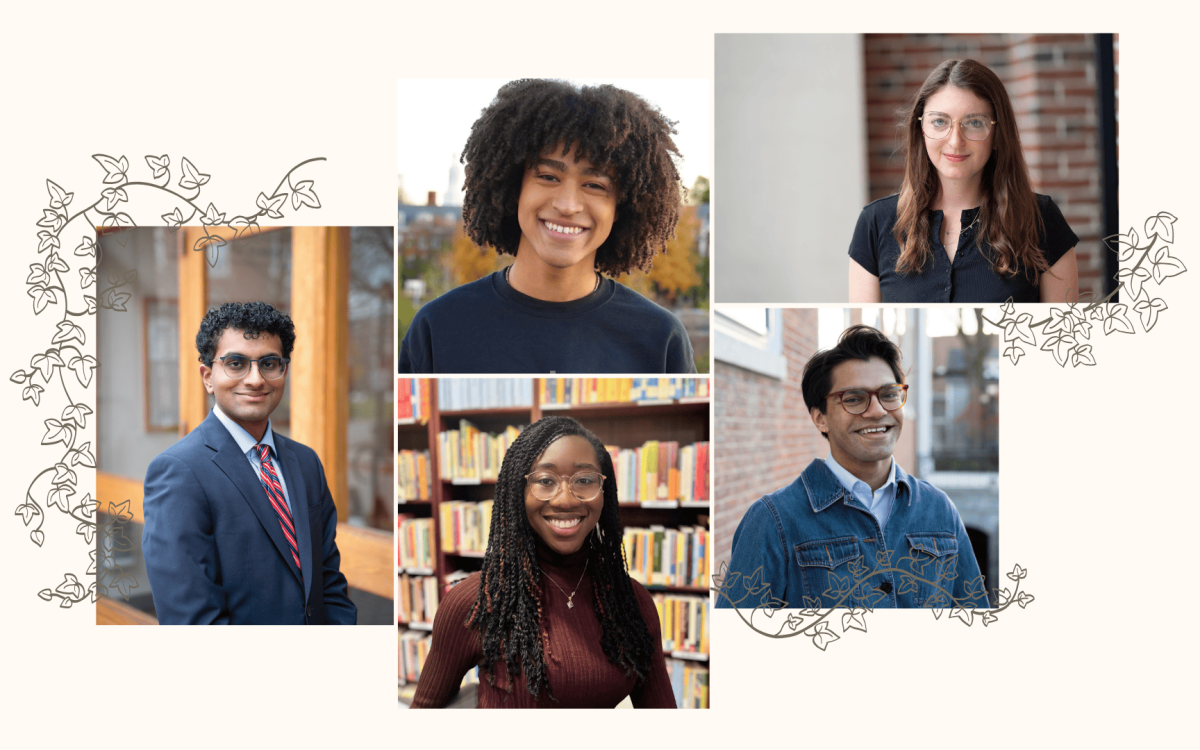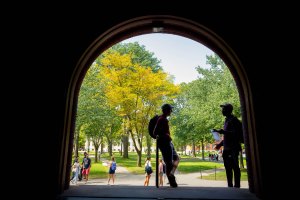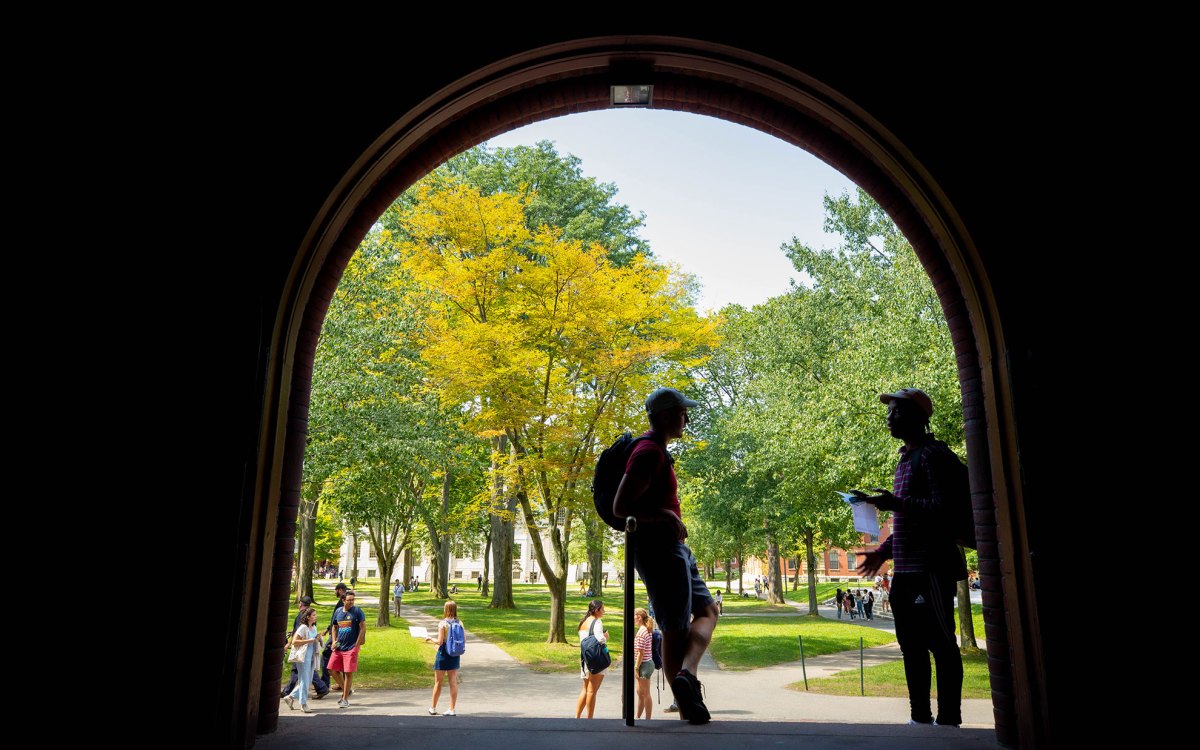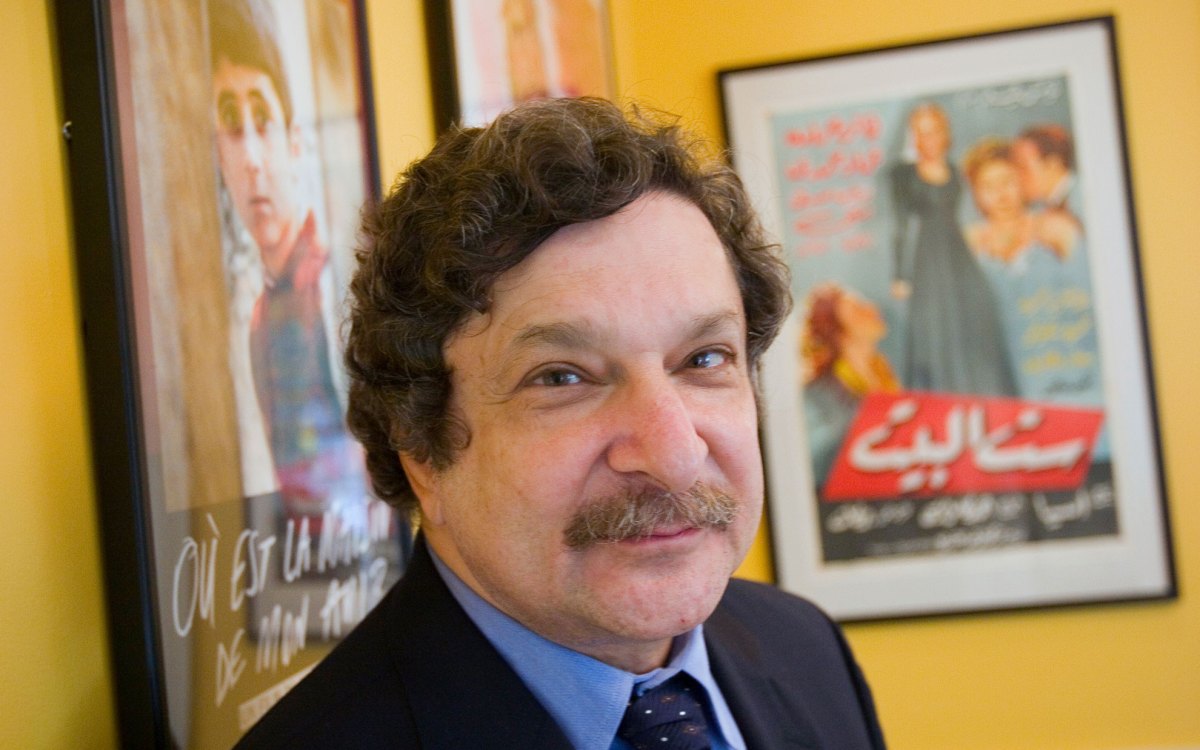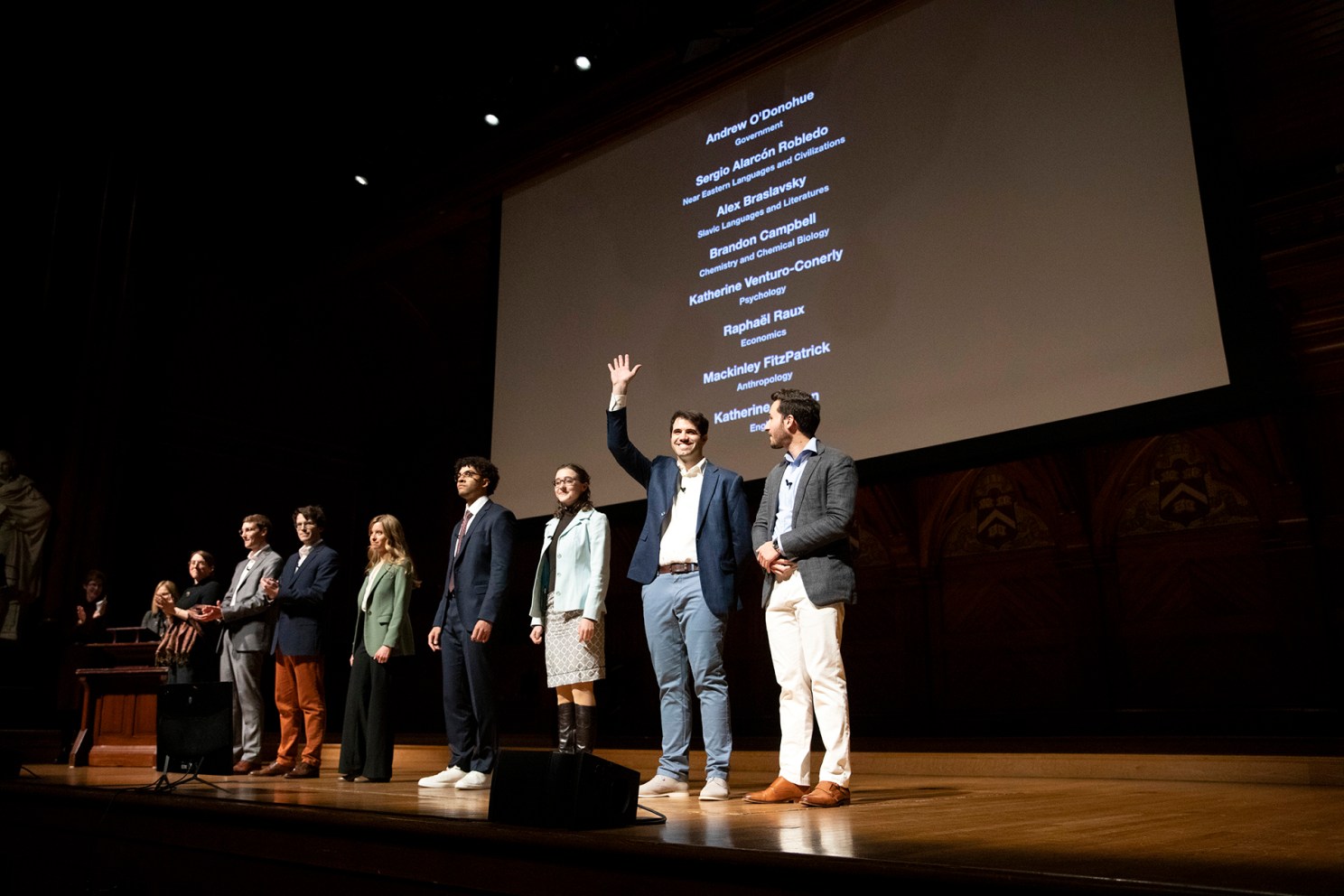
Photos by Veasey Conway/Harvard Staff Photographer
Cutting drug costs, embracing aging, demystifying AI — and more research ideas
8 graduate students pitch their work in Harvard Horizons talks
At Harvard, thousands of scholars are working to advance knowledge on a wide array of topics. Eight students are selected each year to workshop ways to bring that knowledge from the University to the wider world through Harvard Horizons.
Now in its 12th year, the program invites doctoral candidates to share their work in a one-night academic symposium. Students receive one-on-one mentoring to hone their presentation skills and research ideas.
“It is crucial that both faculty and students are able to communicate and connect with the broader world,” said Karen Thornber, the Richard L. Menschel Faculty Director of the Derek Bok Center for Teaching and Learning. “These multimodal skills are foundational, both for engaging students in the classroom and for ensuring that research which has the potential to contribute significantly to the well-being of all is both accessible and impactful to a wider audience.”
Harvard Horizons is a project of the Harvard Kenneth C. Griffin Graduate School of Arts and Sciences and the Bok Center.
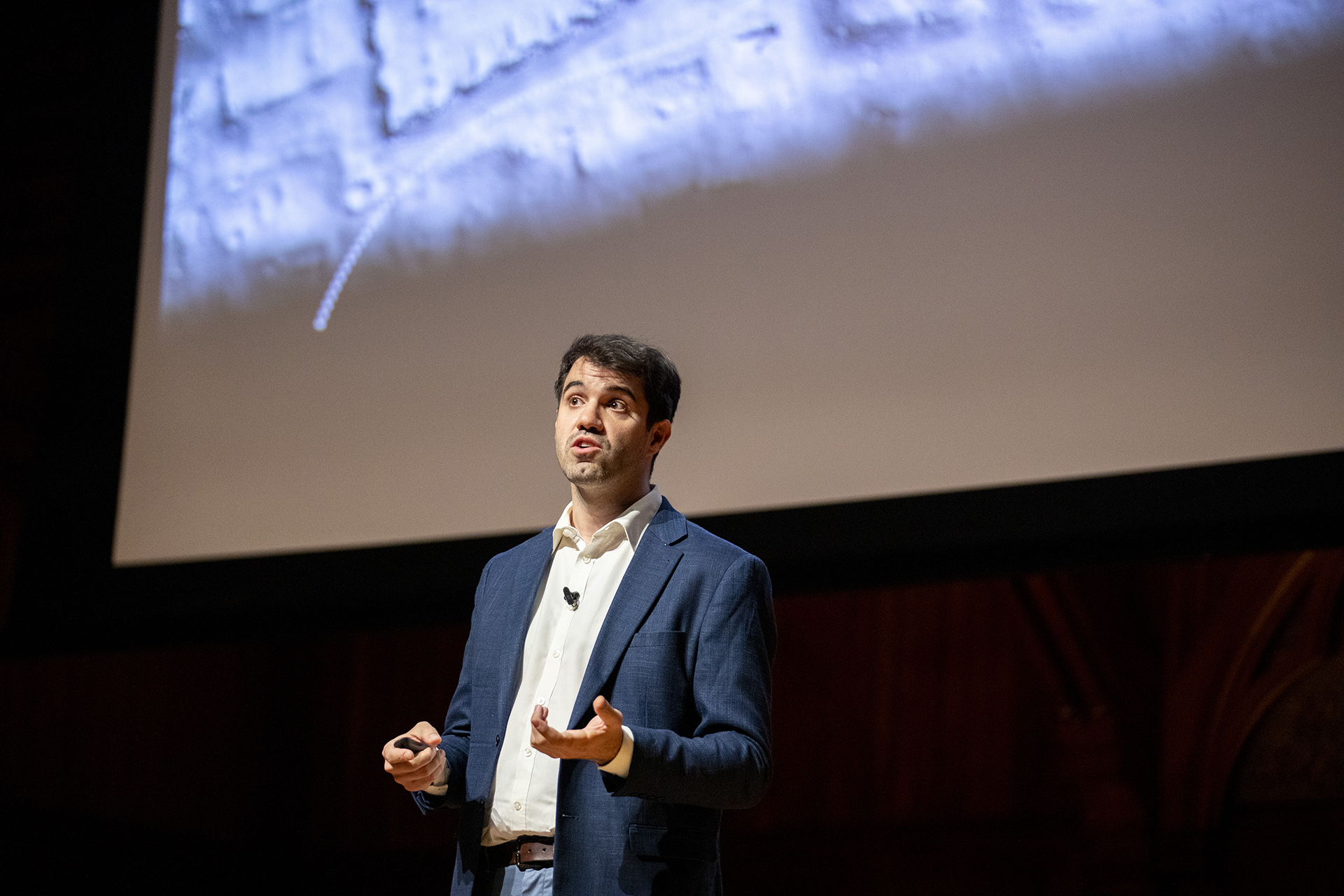
‘Remodeling’ ancient Egyptian architecture
Sergio Alarcón Robledo
Near Eastern Languages and Civilizations
Ancient structures are not as set in stone as we once thought. Alarcón Robledo is trying to better understand the histories of tombs in North Saqqara, Egypt, using 3D modeling and a process called photogrammetry — mapping structures onto archaeological sites with archival photography and software. He’s found that tombs changed over time, with additions and reconstructions, from places purely for funeral services to sites of ritual practices and community gatherings.
“Buildings are like people, and writing about their history is very much like writing their biography,” he said. “In our lives, there may be many moments which are representative of our identities … but even freezing one moment of everyday of our lives would not be representative.”
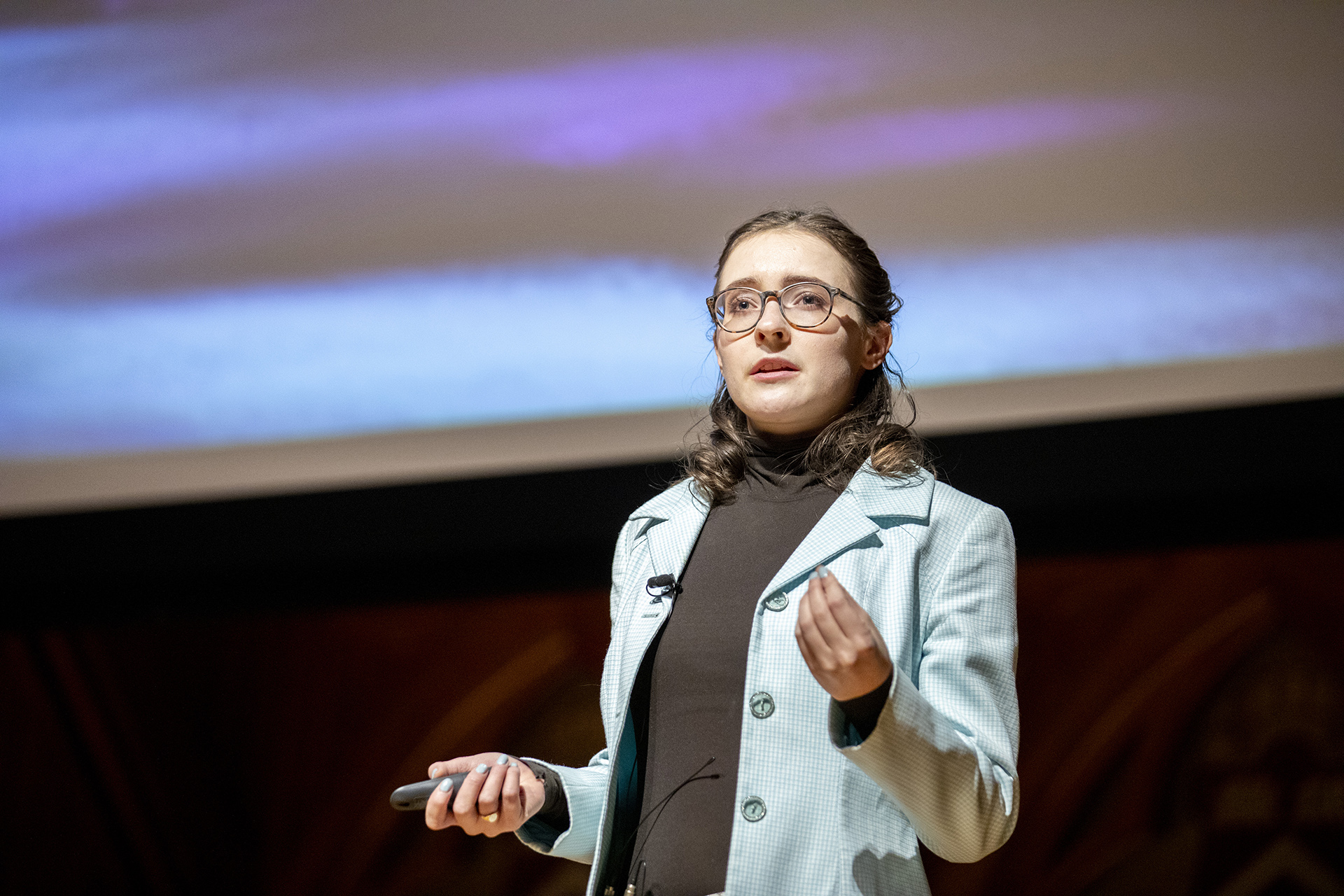
Harvard University
Getting older can be beautiful, says Braslavsky. Her talk centered around what scholars can learn from older female poets, including how to embrace aging instead of succumbing to the narrative of decay and decline.
“While the cultural zeitgeist tells us to fear aging, aging is more a part of the human experience than ever before,” she said.
Her work in particular focuses on three Slavic poets — Elizabeta Mnatsakanova, Bohumila Grögerová, and Krystyna Miłobędzka — who wrote and created into their later years.
“These women show us through their work that time can be filtered through our perceptions, that time can be measured as much emotionally as it can be empirically,” Braslavsky said.
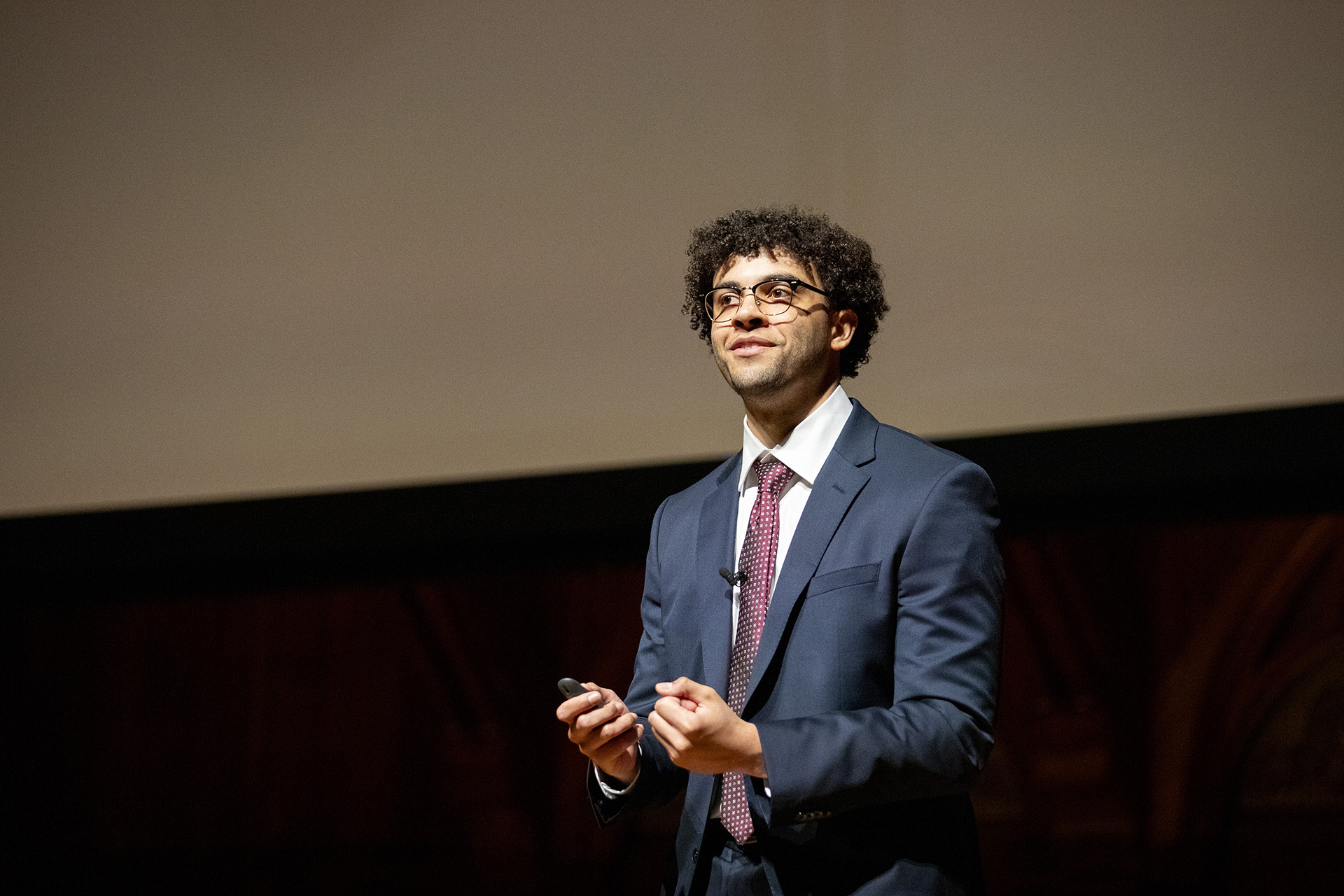
Harvard University
Silver, according to Campbell, may be good for more than jewelry. His work is attempting to use silver in a chemical process that would make the production of pharmaceuticals a fraction of the current cost. The trifluoromethyl group is essential to many modern drugs, but it can be hard to synthesize. Using photochemistry, Campbell has been working to utilize trifluoroacetate as a trifluoromethyl source — a notoriously hard process.
To do this, he’s utilizing a special type of silver (Ag²⁺) — a highly reactive form of the metal that can be recycled and reused to not only cut costs but potentially also make strides in sustainability.
“At the outset of my Ph.D., very few Ag²⁺ compounds had ever been made before. But in this absence of knowledge, in this lack of precedence, I saw opportunity, and I seized it by devising a new synthetic strategy toward isolating large quantities of silver compounds,” Campbell said.

Harvard University
Before there were spreadsheets, there were khipus. Twisted twine with series of knots, khipus were the ancient Inca’s alternative to written script. They were used to record data, including census counts, taxes, and maybe intricate narratives and songs.
FitzPatrick has been studying a collection of 33 khipus from cliffside tombs at Laguna de los Cóndores in Peru to better understand the people who made them.
“I decided to put the process on its head, working backwards to understand how khipus were made, who made them, and what this can tell us about their use,” FitzPatrick said.
Part of this process, he said, has been to become a khipu-maker himself. During his presentation, FitzPatrick distributed a homemade khipu to each member of the audience.
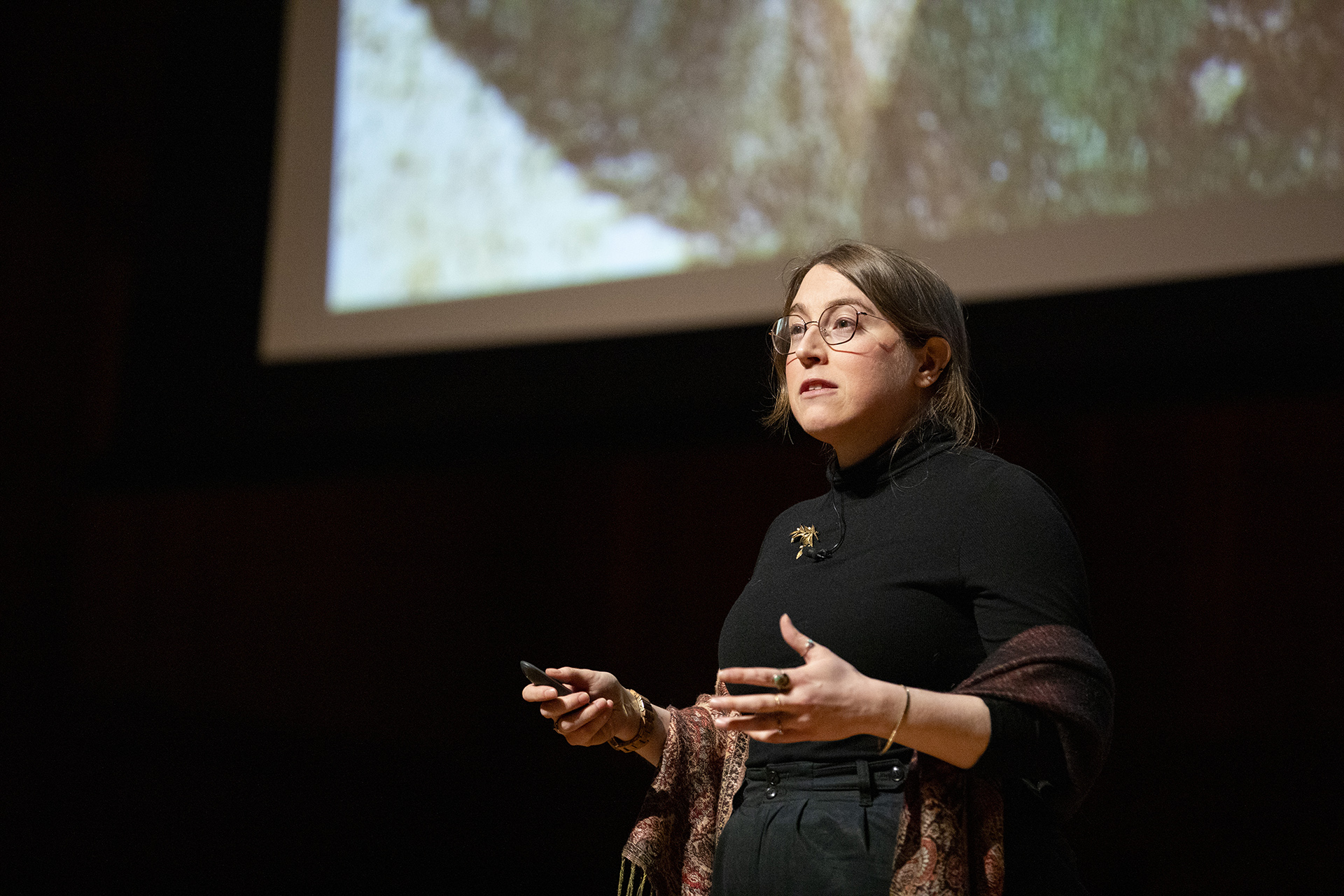
Harvard University
The ancient Greek poet Sappho has long been considered by scholars to have been lost to time, only to be rediscovered in the late 19th century when fragments of papyrus containing her poetry were unearthed in Egypt. But Horgan says she was never really lost.
“She has been continually present in poems and plays, in sculptures and statues, and in the minds of the readers who have imagined her again and again and again, regardless of the presence or absence of her poetry,” Horgan said.
Horgan’s work is focused on dispelling the myth that the work of Sappho — a famously queer poet — was purposely oppressed. In reality, she said, Sappho and her queerness have been present in countless works of scholarship and art since her life in the time before Christ.
“My hope is that this work provides not only narratives of queer suppression, but queer survival. Sappho did not survive in spite of her queerness, but in fact, because of queerness,” she said.
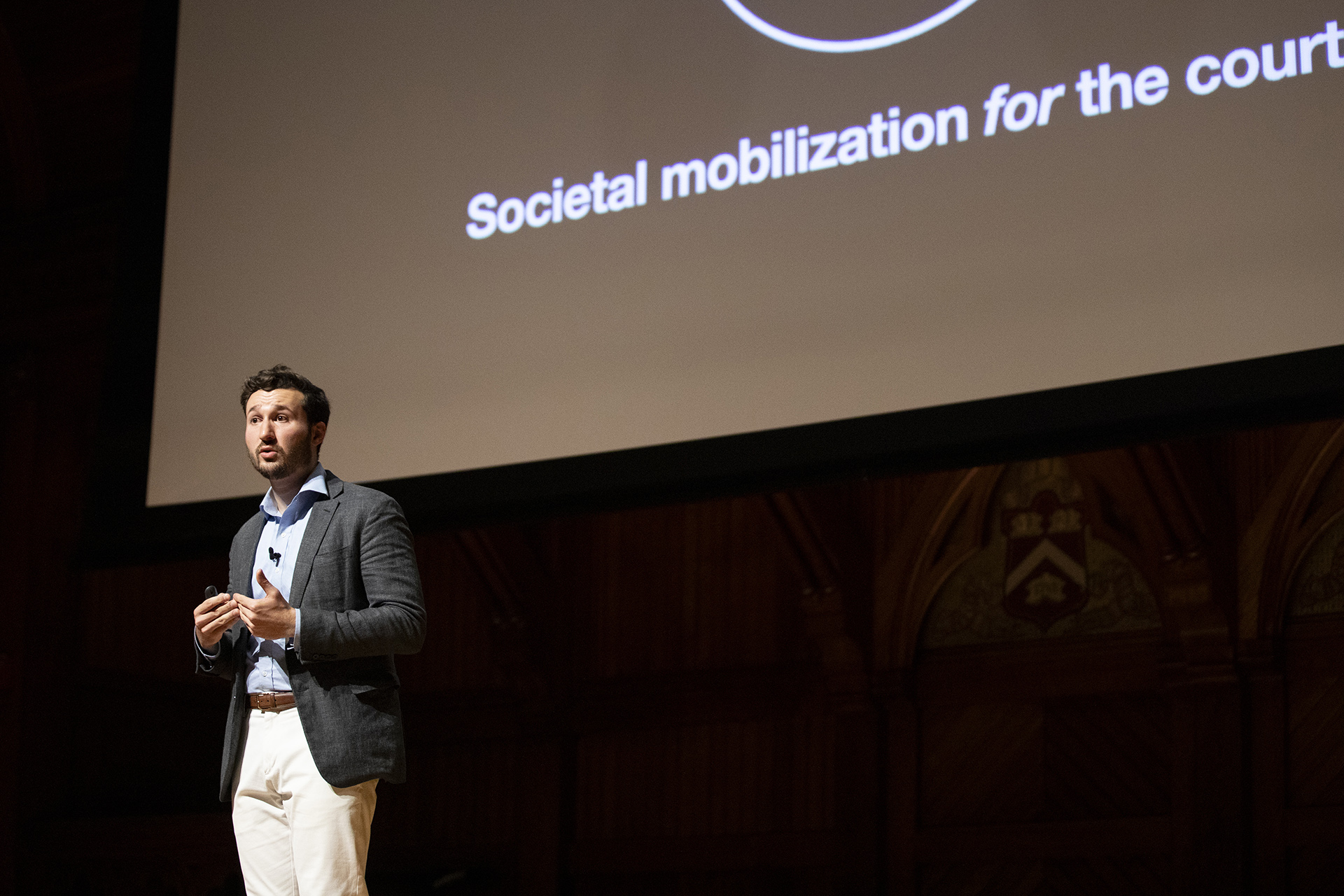
Harvard University
Courts, key institutions in democratic societies, can both help and hurt democracy, according to O’Donohue. The Ph.D. candidate, who witnessed a military coup attempt while working for the U.S. State Department in Istanbul, said in his talk that this is particularly apparent in places like Turkey, as well as Israel and even the U.S. Israel and Turkey, according to O’Donohue, exemplify opposite ends of the “judicial power-sharing” spectrum — or the need for cross-partisan compromise to appoint judges to the country’s highest courts.
“I came to Harvard because I had this problem I needed to solve,” he said. “Why do courts defend or undermine democracy in particular by upholding legal constraints of powerful political leaders?”

Harvard University
Are we using AI wrong? Raux says we are. According to his research, humans project their own thinking onto artificial intelligence, leading us to miss out on what the tech can really do for us.
“We need to make sure that as humans, we can fully harness the potential of AI,” Raux said.
Conducting experiments using chatbots, Raux had the AI answer questions about parenting advice. His aim was to show that human intelligence is vastly different than artificial intelligence, and that what makes something difficult for humans may be different from AI and vice versa.
“But do people realize this when interacting with AI?” he asked.
Ultimately, Raux hopes that his work will help both researchers and users better harness the technology’s power.
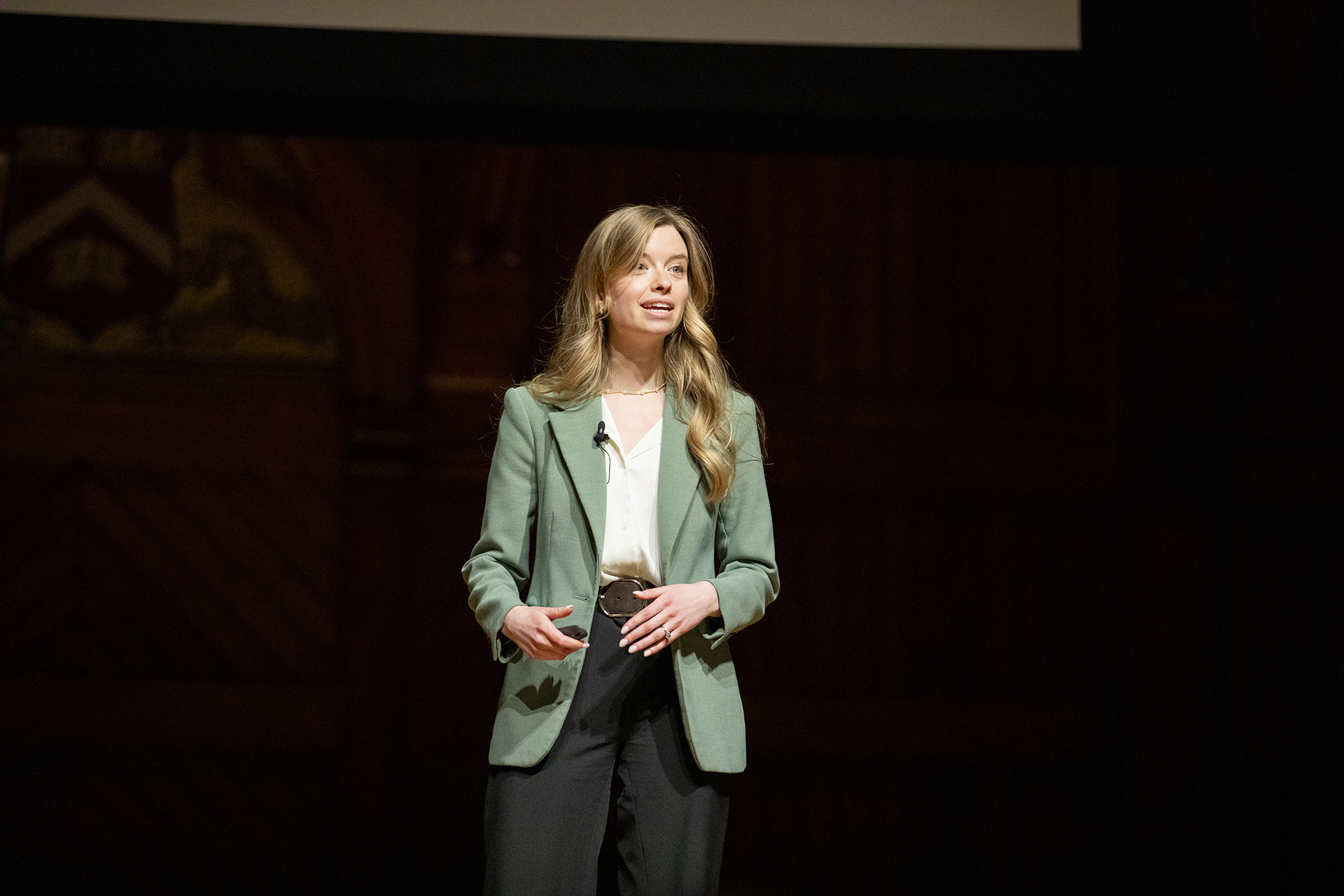
Harvard University
Venturo-Conerly has a lofty goal: to bring mental healthcare to every young person across the world. She’s starting in Kenya. Building on work she started as an undergrad with fellow Harvard alumni Tom Osborn, Venturo-Conerly has been programming mental health services for Kenyan youth through the Shamiri Institute. Named for the Kiswahili word meaning “thrive,” Shamiri uses a tiered system of laypeople, supervised by mental health professionals and experts, to deliver counseling and academic support to Kenyan students. Along with mental health, their work focuses on academic, financial, and social well-being.
“Instead of focusing on psychopathology, it circumvents stigma by focusing on positive concepts, growth mindset, gratitude and values, affirmations, all of which are research-backed interventions theorized to produce an upward spiral of change in beliefs and behaviors,” Venturo-Conerly said.
Shamiri is in its sixth year of operation, and Venturo-Conerly and Osborn continue to study its impacts.
